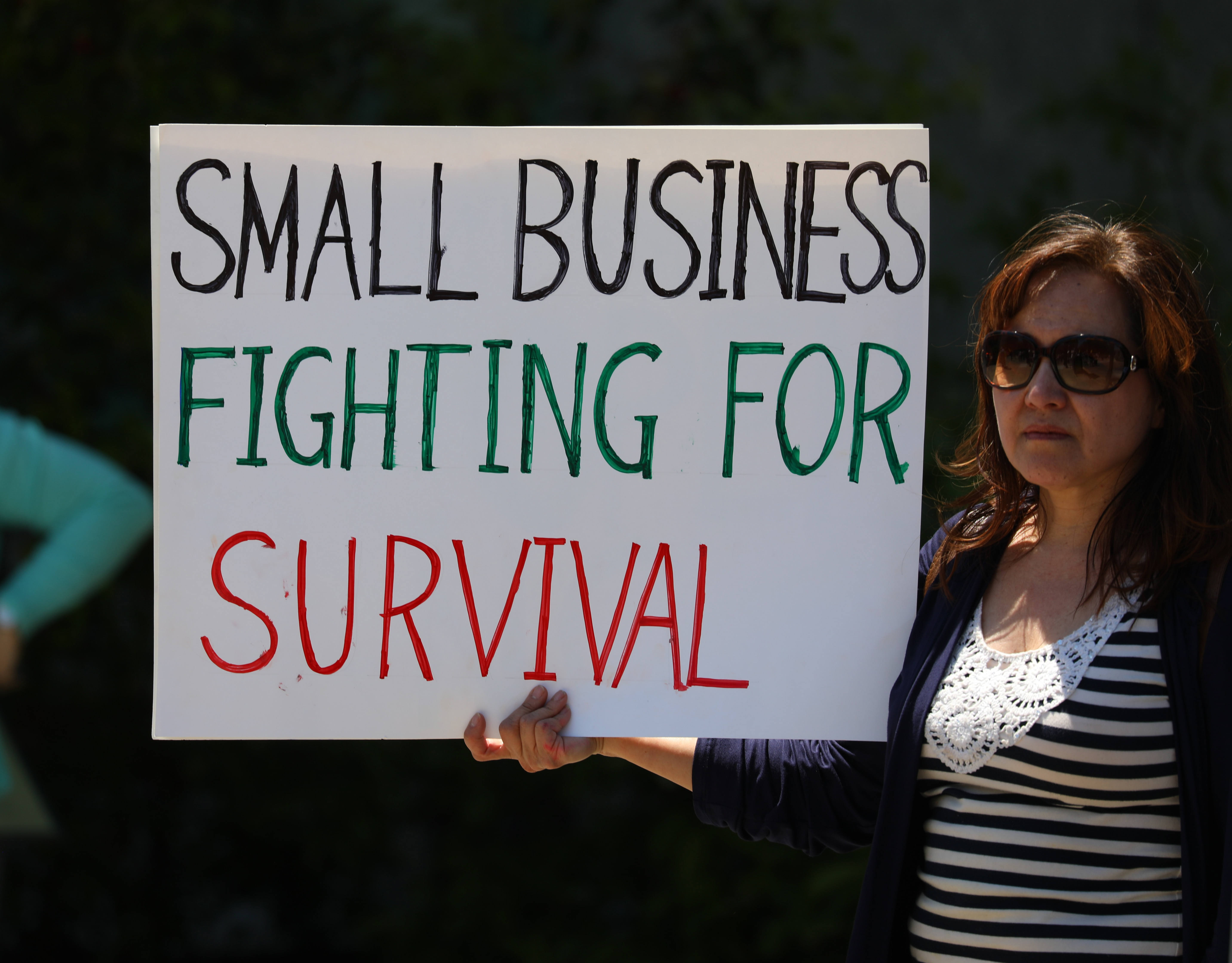The following piece was published in Business Leader Magazine
In a crisis you can always turn to McKinsey & Co. During the last one, they popularised the term, ‘The New Normal’. For this one, they’ve come up with ‘The Next Normal’. It is different, but the same. The point to pivot. The moment business leaders should actively consider changing lanes. McKinsey argue that COVID-19 has turned “fault lines” in existing business models into “giant fissures”. They go on to suggest that the current pandemic has created “a great acceleration” of existing trends. They conclude, optimistically, that this brings with it “a unique opportunity to unlock big strategic moves.” The message, as ever, is never let a crisis go to waste.
The first of this three part series of articles explored how COVID-19 is bringing the issue of Indoor Air Quality to the forefront of our minds. Suddenly, any and every place we congregate indoors has been transformed from a place of shelter, to a locus of danger. From places where we connect with friends, to places where we contract viruses. The changes this advances are profound and business model changing.
Indoor Air Quality - the new must do
Whatever happens inside our built environments becomes secondary to the over-riding issue of the day: how do we rebuild confidence that our buildings are safe to inhabit? To date, efforts have been intense but partial, and potentially flawed. They have focused on restricting building usage, either by shutting them down partly or entirely, and / or reducing density of occupancy. They have been supported by a range of deep cleaning regimes. In fact, there are 14 different guides to help companies and organisations fulfil their now legal responsibilities. However, whilst these efforts are certainly ‘must do’ and will make places COVID safer, it does not make them COVID secure. The reason is a significant missing piece – the measurement of indoor air quality.
This is partly because many Governments have taken far too long to recognise that COVID-19 is spread by airborne transmission. In some parts of the world, infamously, a political debate still rages on whether to mask up or not to mask up. This is not to ignore that the UK also took its time (mid-July with updates in late September) to reach a mask up orthodoxy. In fact, it took until 5th October for the US Centres for Disease Control and Prevention (CDC) to acknowledge that the coronavirus can be spread by tiny particles (aerosols) that linger in the air. The agency said it made the decision because of the mounting evidence that people with covid-19 can infect people even if they are more than six feet away, or shortly after the infected person left the area.
Public consciousness is moving faster though, raising the importance of indoor air quality. Articles in The Atlantic (we need to talk about ventilation) and Time (is my air conditioner killing me) - are typical of the questions being raised.
This is all creating an imperative for public sector leaders, real estate investors, owners, developers, and tenants to develop indoor air quality strategies. Leaders in a huge number of verticals – education, health, leisure and office space – to mention just a few - now have the opportunity to make what McKinsey would call ‘big strategic moves’ to deploy indoor air quality strategies as key factors of differentiation and competitive advantage. Such strategies are built on three pillars – measurement, mitigation, and communication.
Air Conditioning is now not just about temperature but CO2, VOCs and PM2.5
As Joseph Allen and John Macomber write in their new book Healthy Buildings, “buildings are now entering the era of big data. New sensor technologies are making the invisible visible.” In the past, you were lucky to be able to learn the room temperature and that was pretty much an approximation. Now you can get real time readings of room temperature, humidity, CO2, VOCs and PM2.5. (VOCs are toxic chemicals can be found in everyday materials and can cause respiratory and skin irritation. PM2.5 refers to atmospheric particulate matter – PM - that have a diameter of less than 2.5 micrometres which has been identified as a carrier of the virus.) This is vital data to know about. For example, The United Kingdom’s Office for National Statistics, stated that long-term exposure to fine particulate matter could increase the risk of contracting and dying from COVID-19 by up to 7%. In fact, whilst you are at it, you can also measure ambient light, ambient noise, energy consumption and carbon emissions, all in real time. Each of these elements have major impacts on our health & wellbeing, comfort, and productivity.
The data can be tracked in real time and displayed via apps on your smart phone. Big data creates big possibilities for businesses. Not least as we can also mitigate many issues and optimise indoor air quality. (We will cover this in the third and final article.)
So, let’s now look at a few business use cases.
Restaurants
Linsey Marr is a scientist at Virginia Tech and an expert on the transmission of the coronavirus through the air. She and several of her colleagues agree that the riskiest environments for catching Covid-19 are crowded indoor spaces, including restaurants. “Restaurants are among the higher-risk activities because you’re indoors with other people without masks for some of the time at least.” She goes on to say, “If you walk into a place and it feels hot and stuffy to you, and there’s a lot of people in there, you should walk back out.”. There’s more scarily fascinating stuff here. The CDC in the US published a research indicating that 40.9 percent of people who tested positive for COVID-19 had eaten at a restaurant.
Consumers have choices. Which one would you book: the restaurant that has followed the rules or the restaurant that has gone above and beyond the rules? Your new favourite restaurant could well be the place that displays its indoor air quality on its website and allows you to login into real time data when you log in to their free Wi-Fi? The Times reports on how government advisors are considering a Kitemark-style system could be pinned to levels of carbon dioxide in restaurants and pubs.
Flexible Offices
Nearly 20% of all new office space in Central London was snapped up by Flexspace operators, including but not limited to WeWork. In fact, a new centre opened every 5 days. These factoids come from Cushman Wakefield’s new report. These were the good old days in 2019. All it seemed to take was free beer, or artisanal roasted coffee, or funky pods to fill them. And boy it was successful. Then came Covid. Cush Wake report that “utilisation has dropped to c10% of its pre-Covid levels.” Demand is returning, but slowly. Flexible working has been usurped by Work From Anywhere. Dropbox is the latest in a long list of companies reviewing their space requirements, in their case announcing a ‘virtual first’ approach.
Antony Slumbers wrote, now very prophetically in early 2019, that “no company actually wants an office; what they want is a productive workforce.” The pandemic has made the mainstream wake up to the reality of this fact. Free beer is now totally stale beer. Artisanal coffee now seems particularly bitter. However, Flexspace providers have yet to figure out what their clients are buying and are still selling generic, if designer, space. In fact, many aren’t really selling it, they are practically giving it away, hoping to upsell it down the track.
Cush Wake predict a big shake out in market with supply outstripping demand. Perhaps the “winners” to use the Slumberian phrase will be the ones selling environments optimised for productivity. In recent years, there has been a lot of research into the connectivity of indoor air quality and cognitive performance. Turns out that when knowledge workers are in an optimised indoor environment -meaning high ventilation, low VOCs, and low carbon dioxide - there are dramatic improvements in higher-order cognitive function across all nine cognitive functions domains. In their book Health Buildings, Allen and Macomber point to studies estimating productivity gains of anywhere between 2% - 10% with better indoor air quality. Again, the ability not only to offer real time health and wellbeing data to building users and optimised air quality for tenants provide a compelling competitive edge even over those offering distress pricing.
Nursing Homes
As far back as 2015, an academic study concluded, “even at low levels, indoor air quality affected respiratory health in elderly people permanently living in nursing homes, with frailty increasing with age. The effects were modulated by ventilation.” It is no surprise tragically that nursing homes have been one of the most tragic parts of the whole tragic story. In the United States nearly 60,000 care home residents have died to date from Covid. In the UK, the figure nearly 15,000 care home residents have died from Covid related illnesses since the middle of April.
The Lancet published a study suggesting “that typically poorly ventilated and populated spaces, like public transport and nursing homes, have been reported as sites of viral transmission despite preventive physical distancing. The persistence of small respiratory droplets in such poorly ventilated spaces could contribute to the spread of SARS-CoV-2. Our findings confirm that improving ventilation of public spaces will dilute and clear out potentially infectious aerosols.”
Nursing Homes providers could make real time indoor air quality data available to residents and their families (in many cases the customer as opposed to the consumer). This could be delivered via a branded app. This data could drill down to specific room level, for example private bedrooms and public areas. It could include real time alerts when then optimised indoor air composition varies from levels specifically prescribed for individual residents. This positive, transparent, caring moving would serve to differentiate providers and provide a clear benefit in a cluttered marketplace.
There is an equal imperative in the public sector to drive improvements in indoor air quality. Take schools as one example. Allen & Macomber report on “over 200 scientific studies documenting how the school building influences student health, student thinking and student performance.” There is a brilliant piece in Wired which talks to this. The UK Government is talking about improving air quality outside schools, it must also focus on improving air quality within school building. The payback is a levelling up of health & wellbeing and academic achievement.
Air is all around us. So are opportunities for business.
Much of this lies at the intersection of building and health science. And much of it entails exploiting the possibilities of big data deriving from the real time measurement of indoor air quality. And much of it is about making that data open and transparent to the ‘customers’ of our indoor built environments. It is about turning data into information. It is about education and communication. The third and final element is mitigation of air quality issues and the optimisation of environments. From a narrowly Covid perspective, it is going too far to suggest that cleaner indoor air represents a miracle cure. That said, it is a major addition to the defence armoury.
The third and final piece will look at how technologies can help improve indoor air quality and how they can achieve this whilst reducing energy consumption and greenhouse emissions.










